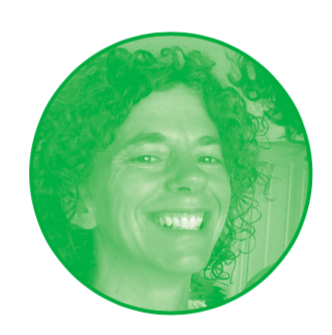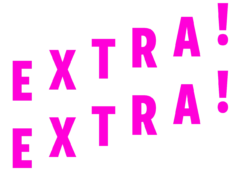by Louise Curham
Louise Curham is an artist, archivist and filmmaker, and a researcher at University of Canberra’s Centre for Creative and Cultural Research.

Australians are terrible at criticism. John Gillies made this point to me when I began postgraduate study with him in the year 2000. The arts community in Australia is relatively small, people don’t like to say anything nasty about each other, and if something nasty is said, we don’t know how to talk about it. The massive down side to this is a) we have to read between the lines to gauge how our work really goes down; b) we all lose the skill of criticism which turns us into quiet australians.
There is a training in the public service called ‘giving and receiving feedback’ to upskill people at this process. It’s a hospitable approach, and that’s always the rub: if someone invites me to respond, I always feel I must be a good guest. However, I think we must evolve our idea of a good guest from a quiet guest to one who is defiant in good heart.
Here’s the public service approach: choose an appropriate time and place. Don’t store it up. Give feedback as soon as possible and practical. Allow enough time so that you are not rushed. Sleep on it if you are angry, upset or stressed because feedback given at the wrong time often does more harm than good. And the advice on receiving feedback is that there are 3 stages: react, reflect and respond. Have a think before responding, and “take responsibility for the feedback”.
The Making Art Public exhibition, curated by Michael Landy, works with the metaphor of “archive boxes”. So, here comes my feedback, from an archives perspective.
(Incidentally, why should you listen to me? Like you, I’ve been a visitor to the exhibition, twice in fact. Secondly, the EXTRA!EXTRA! editorial team has asked me to contribute because I’ve been working with archives for a long time – since the early 2000s).
From my point of view, where does the exhibition fall short?
a) Not enough archives.
b) The choices of archival records on show are disappointing.
I’ll go into more details now about each of these points.
a) Not enough archives
When I was exploring the exhibition with Boni, I saw very few actual records. (Note: “records” are the items that live within an archive). The most prominent administrative records included some letter exchanges with Christo and Richard Long. I wanted more, much much more! Why? Because records let me draw some of my own conclusions. I can learn in unexpected ways, for example, through seeing Richard Long’s beautiful, patient hand writing for myself. Archival records also let me form my own conclusions about the “truth”. For example I was interested to see Christo describe in his own words that he didn’t want to give a lecture in English. The stories records tell can be unruly. I’m sure there must exist a fascinating letter chain summoning all those hardworking volunteers to Little Bay. They can give us an insight into the administrative processes behind a project, and they can give us insight into the structuring structures. For me, that’s part of what’s intriguing about John Kaldor’s work, his collaboration around the logistics. Unfortunately, the opportunity to explore all this, by showing us some of the meta-story of how all this art came to be in the world is largely missing from Michael Landy’s curatorial efforts (I have however acknowledged his efforts in the adjacent article co-authored with Boni Cairncross).
I know I am not alone amongst archivists in subscribing to the view that the slow absorption of archives is rewarding. In my opinion, it has the potential to reward every viewer and it’s a shame we don’t get more of the opportunity in Making Art Public. It does take time, lots of it, to absorb oneself in this strangely material and conceptual environment that is an archive. Perhaps Michael could have re-enacted an aspect of his curatorial research, and called on the artist volunteers of Sydney to rummage through the boxes in public. That kind of chaotic interactivity does seem quite terrifying to an archivist, but it’s my experience that when people understand how they have to care for archives (don’t mix ‘em up, take care with their order, that it’s like heart surgery, never remove them from their companions in the box), they can do it!
Trying to make sense of that archival encounter would have been a behemoth task, but fascinating. It would have given us a bit more of a sense of the courage of some of this art and we may have learnt more about ourselves as audiences. So here’s hoping, John, you decide to do all this again, and next time let’s engage with all the materiality of the archival “stuff” you’ve lovingly cared for since 1969. (Editor’s note: this month, Kaldor Public Art Projects will launch an open access digital archives for the public to access – check their website for a link).
b) The choices of archival records on show are disappointing.
I have appreciated for some time the way that Jonathan Jones assiduously credits everyone who brings his work into existence. Jones acknowledges there’s so much more to the work than his solo-authorship. Archives share that property. By definition, they never stand alone – the one record we see on the wall is a companion to a whole lot more in the file, in the box, the box within the repository (the same applies in digital archives). So in Christo’s box, I wanted to know the administrative lineage to the correspondence between Christo and John. Did John keep a filing cabinet of his letters or did he and his staff all add to files organised by project? Was there a moment where he split out the projects from his textiles business? That would tell us he felt the art projects had really taken on a life of their own. I wanted a label that kept the language John used at the time for the folder he kept the letters in, that would start to give me a sense of how this all really worked within John’s business and in the scene in Sydney at the time. In other words, the archives start to come to life if we can see how they connect to one another. And as they start to come to life, they start to connect to us, the audience.
So I wanted a label for each record with provenance info. I also wanted to be told that the replica records were just that, replicas. They were strangely pretending to be original, with holes punched in the copies!
To return to the rules of giving and receiving feedback. The action I’d like to see is the courage to exhibit archives as archives. In my experience, curators understand or are interested to learn about the joys and difficulties of exhibiting records. We don’t need to shy away from them. The public (us) has a role, which is to ask for archives – to demand direct access to them! The National Librarian at a recent talk wondered why people don’t quiz our institutions more about what’s missing. So write your letter to the editor and request the relevant records!
Postscript from Louise: further examples of archival material I noticed in the exhibition were newspaper clippings of the Murdoch party for An Australian Accent; diagrams were exhibited in Box 5 (Charlotte Moorman and Paik); photographs were used for quite a few boxes (Miralda’s Coloured feast springs to mind); television coverage also featured heavily – Gilbert & George is a good one there, and of course Christo; and then there were the objects like Sol Le Witt’s exuberant drawing/plans. These whet the appetite, and made this archivist-artist crave more!
(The Art of Feedback: Giving, Seeking and Receiving Feedback, ACT Public Service n.d.)
Louise Curham is an invited speaker at the Archives in the digital age symposium, Celebrating the Kaldor Public Art Projects Digital Archive, on Wednesday 20th November, 1-4pm, at AGNSW. For more info on the symposium, click here
